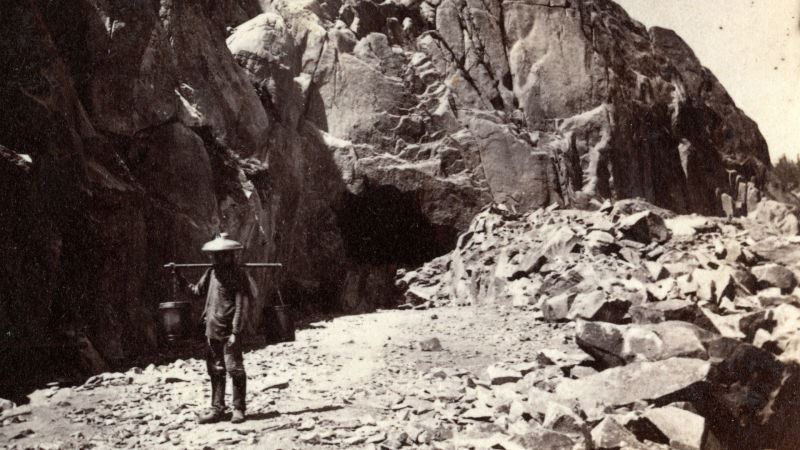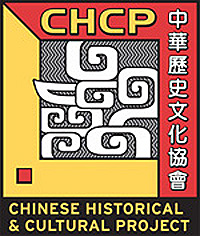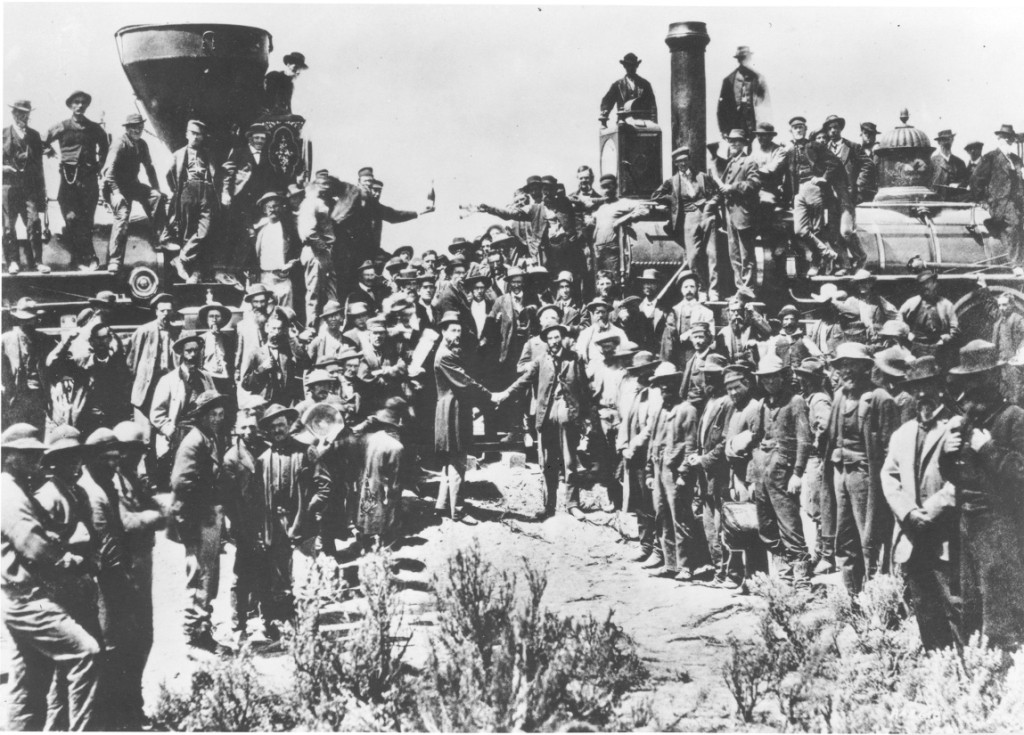|
- Home
- Chinese Railroad Workers
Chinese Railroad Workers
The following information is an excerpt of a brochure created specifically for the Sesquicentennial celebration of the Transcontinental Railroad at the Golden Spike Conference in Salt Lake City, Utah in May 2019. Members of the Student Docent Cultural Ambassador Program created the brochure and a presentation on the Chinese Railroad Workers. Click here to view the brochure and the presentation.
Chinese Immigrants and the Transcontinental Railroad
Sesquicentennial 1869-2019, "A Day of Jubilation From Coast to Coast"
This is a story of thousands of Chinese immigrants who came 150 years ago to build the railroads of America. Lured by promises of good jobs and wages and citizenship, they were sent to work on nearly impossible tasks, chipping though solid granite with hand tools. Their courage, resourcefulness, creativity, determination and selflessness were challenged countless times. The Chinese workers suffered greatly, but steadfastly met the extreme challenges of the railroad work. Let us always remember their sacrifices and their contributions, seldom acknowledged, to the growth and advancement of America. The achievements of the Chinese railroad workers will endure as one of the greatest projects in the history of mankind.
Introduction to the Transcontinental RailroadThe construction of North America's first transcontinental railroad was a six-year process from 1863 - 1869, that was primarily worked on by Chinese and Irish immigrant workers. Chartered in 1862, the Central Pacific and Union Pacific railroad companies took on the challenge of connecting the western United States to the east for the first time. Upon completion, the railroad stretched from Sacramento, California to Omaha, Nebraska. | Early Immigrants to America - BackgroundThe Central Pacific Railroad (CPR) was desperate to find workers for the railway construction. They looked worldwide and, amazed by the Great Wall of China, looked at labor prospects in southern China. The men came predominately from Canton and Siyi, which included the four counties of Taishan, Kaiping, Xinhui, and Enping. At the height of the railroad construction in 1868, over 12,000 Chinese workers made up more than 90% of the CPR workforce for the transcontinental railroad. During this period, the Chinese laid down hundreds of miles of rails. CPR enticed thousands of Chinese workers to come to the US with overblown promises of jobs and riches. What the Chinese found were back-breaking and dangerous work, extremely long hours, low pay, unsanitary conditions, and racial discriminatory practices. |
Discrimination and HardshipsThe Burlingame Treaty of 1868 granted the Chinese immigrants the right to live in the U.S. However, they were denied access to public education and citizenship rights. The benefit of the treaty did not last as anti-Chinese feelings swept the nation. Chinese workers were treated unjustly and paid lower because of their race. Chinese workers were paid approximately $24 to $31 a month, while the Irish workers were pad $35 a month. In addition, the Chinese worked longer hours and paid for their lodging, food and tools while Irish and white workers were provided for. An unsuccessful strike occurred on June 1867 in the Sierra Mountains as the Chinese workers demanded better working conditions, reduced workdays, and wages equal to the white men working alongside them. As a result, the Central Pacific threatened them with violence and halted delivery of food.  In fall of 1865, Chinese workers started work on 15 tunnels, most of them located at high elevations. Of those tunnels, the most difficult was the Summit Tunnel. The tunnel went through solid granite, 1,659 feet long and 124 feet below the ground. Progress on the tunnel was slow, 8 inches a day, with only shovels, picks and hammers. Often the Chinese hung perilously from ropes and mountainsides, digging through solid rock to create tunnels. Use of dynamite led to many accidental explosions. Severe weather conditions during the winter such as blizzards and avalanches destroyed the Chinese workers' camps and killed many. The blistering heat of the Nevada deserts also presented extremely hard working conditions.
Completion and RecognitionWith the help of the Chinese, the Central Pacific and Union Pacific Railroad companies were able to complete the railroad on May 10, 1869. In celebration of this achievement, workers and representatives of the railroad companies gathered together at Promontory Summit, Utah to watch railroad financier Leland Stanford drive the final golden spike that would connect the rail lines. When the workers and officials gathered for a group photo commemorating their success, one thing was clear: no Chinese workers were invited to the ceremony, nor to the photo session, despite their tremendous contributions and sacrifices. Recognition for the Chinese railroad workers was not to come for a long time. We can find recent recognition of the Chinese railroad workers with their installation into the Federal Department of Labor Hall of Fame on May 9, 2014. On the 145th anniversary of the railroad's completion, May 10, 2014, the descendants of these railroad workers congregated to recreate the iconic railroad photo. Their actions hoped to grant their ancestors the recognition that had been deserved, but absent. May 10, 2019 will mark the 150th anniversary of the installation of the Golden Spike, connecting East to the West. Impact on American Culture & SocietyThe completion of the Transcontinental Railroad proved crucial to America's economic development. Transportation changed dramatically. Prior to the Transcontinental, there had only been three routes to the West, all of which were time consuming and unsafe. With the Transcontinental, travel to the West was reduced from months to only 5-6 days. America experienced an economic boom; more goods could be shipped at a faster rate from coast to coast, communication increased, and businesses could market to more people. The railroad enhanced national unity and contributed to the United States' emerging dominance on the world stage. Leland Stanford himself said, "Without [the Chinese], it would be impossible to complete the western portion of this great national enterprise, within the time required by the Acts of Congress." With the Chinese workers' diligence and sacrifice, the line was completed six years ahead of schedule. |


